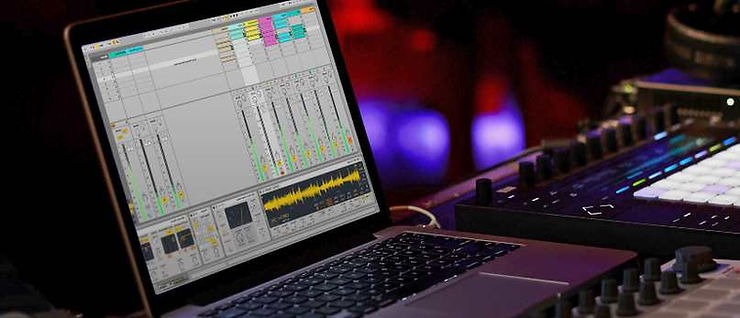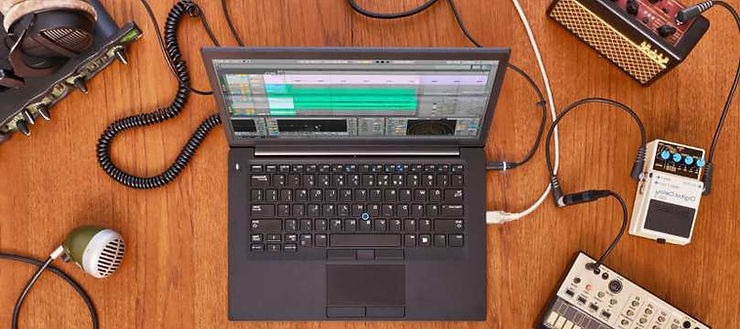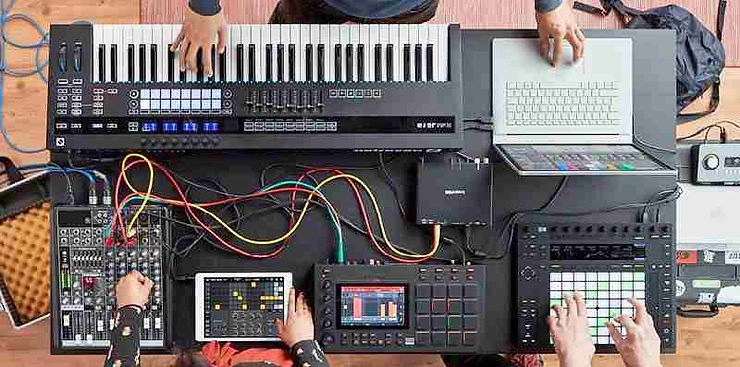Are you ready to unleash your musical potential? Ableton Music Software is your go-to friend if you want to create, compose, and perform music using technology at the forefront of innovation. From its basic characteristics to sophisticated approaches, this extensive tutorial will lead you through all you need to know about Ableton Live so you have all the tools to realize your creative ideas.
Overview of Ableton Live
What is Ableton Music Software?
Beyond a digital audio workstation (DAW), Ableton Live is a complete package that has transformed music creation. Whether your level of experience is that of a seasoned professional or an aspirant producer, Ableton Live provides tools and capabilities to enable you to create your sound. This software is meant to give musicians an easy yet strong stage on which to develop, record, and perform their works.
Key Features of Ableton Live
Among producers and artists, Ableton Live is a favorite because of its abundance of potent characteristics.
Here are some of the key features that set Ableton Live apart:
- Flexible Session and Arrangement Views: Ableton Live provides a session view and an arrangement view so you may rapidly nonlinearly explore ideas and then organize them into a disciplined composition.
- Real-Time Warping and Time Stretching: Ableton Live lets you quickly change the speed and timing of your audio clips in real time, therefore enabling simple remixes and transitions.
- Extensive Library of Instruments and Effects: Ableton Live offers a great range of virtual instruments and effects, so providing countless opportunities for creative investigation and sound design.
- Powerful MIDI and Audio Editing: Ableton Live has easy tools for editing MIDI and audio, therefore enabling you to precisely fine-tune your recordings and performances.
- Live Performance Capabilities: Perfect for DJs and electronic musicians, Ableton Live is made for live performance with capabilities including session view, clip launching, and MIDI mapping.
Benefits of Using Ableton Live
Regarding music production, Ableton Live provides a broad spectrum of advantages that might inspire your originality. Ableton Live is a frequent choice among producers and artists because of its strong features and easy interface.
Using Ableton Live has several main benefits as follows:
- Flexible Workflow: Ableton Live lets you work with both audio and MIDI clips, so granting you the flexibility to try and produce original sounds. Its session view and layout let you quickly arrange and work on your tracks.
- Vast Library of Instruments and Effects: It comes with a large virtual instrument and effect library, so providing you access to a great spectrum of sounds and creative possibilities. Ableton Live has you covered whether you search for experimental synthesizers or reasonable piano sounds.
- Live Performance Capabilities: Ableton Live is a potent live performance program as well as a studio tool. Perfect for live events and improvisation, its session view lets you instantly trigger and control clips.
- Seamless Integration with Hardware: It flows naturally with a range of hardware, including synthesizers, audio interfaces, and MIDI controllers. This lets you easily extend your creative capabilities and regulate your music production configuration.
Ableton Live is a useful tool for releasing your musical production creativity since it provides a spectrum of advantages. Among producers and musicians, its adaptable workflow, large instrument and effect library, live performance capability, and flawless hardware integration rank highly.
Getting Started with Ableton Live

Installing Ableton Live
Starting with Ableton Live will involve installing the software on your PC. The installation process is clear and easy to use. Just use Ableton’s directions to download and install the software. Launch Ableton Live once the installation is finished and start exploring its strong capabilities.
Setting Up Audio and MIDI
Setting up your audio and MIDI devices comes next when you have effectively installed Ableton Live on your PC. This is a crucial phase since it lets you record and play back your instruments, microphones, and other audio gear connected to Ableton Live. Correct configuring of your audio and MIDI settings guarantees a flawless workflow.
Visit the Preferences menu in Ableton Live to arrange your audio devices. You can choose your audio interface and change the buffer size and sampling rate here. It is advised to guarantee the best sound quality and reduced latency by using a premium audio interface.
MIDI devices let you link your MIDI controller or keyboard to your computer with USB or MIDI cords. Your MIDI devices will be automatically detected by Ableton Live and assigned to control different software parameters.
To guarantee compatibility with Ableton Live and to make use of the most recent features and improvements, remember to search for any firmware upgrades for your audio and MIDI devices.
Navigating the Ableton Live Interface
After Ableton Live has been set up and installed, it’s time to become acquainted with the interface. Designed to be simple and user-friendly, the Ableton Live interface lets you easily negotiate the software.
Here are some key elements of the interface that you should be aware of:
- Session View: Here you may nonlinearly arrange and activate clips, loops, and samples. It’s fantastic for your musical improvisation and experimentation.
- Arrangement View: This one lets you organize and alter your songs in a timeline fashion since it is more conventional and straightforward.
- Browser: Your library of sounds, instruments, effects, and samples is available right here. It is arranged logically and with simplicity for navigation.
Effectively working on your music projects depends on your ability to negotiate the Ableton Live interface. Understanding the several points of view and the browser will help you to quickly locate and work on the required components. Ableton Live offers a flawless workflow for your creative process regardless of your inclination for the freedom of the Session View or the Arrangement View.
Creating Music with Ableton Live

Working with MIDI and Audio Clips
Working with MIDI and audio clips in Ableton Live gives you a great spectrum of creative options right at hand. Audio clips enable you to interact with recorded audio samples; MIDI clips let you produce and control musical notes and rhythms.
Ableton Live’s straightforward clip-based workflow is among its main benefits. On the timeline, you may readily arrange and work with clips to explore several musical concepts and configurations.
Working with MIDI clips just drag and drop them onto a MIDI track in the arrangement view. The piano roll editor then lets you change the notes and rhythms, modify velocities, and apply expressive MIDI effects.
Working with audio clips, you can slice and dice them using audio effects to generate fresh rhythmic patterns or control them. Furthermore providing strong warping features, Ableton Live lets you time-stretch and pitch-shift audio clips to match the pace and key of your production.
Apart from handling single clips, Ableton Live has instruments for handling sets of clips. Clips can be combined to create scenes, which, during a live performance, can be triggered and arranged in real-time.
Working with MIDI and audio clips in Ableton Live provides a universe of creative possibilities regardless of your role producer, composer, performer, or otherwise. To produce original and interesting music, experiment with various combinations, layering techniques, and effects.
Using Virtual Instruments and Effects
It’s time to investigate the world of virtual instruments and effects in Ableton Live once you have a strong grasp of MIDI and audio clips. Virtual instruments let you produce a broad spectrum of sounds and melodies by use of software-based synthesizers, samplers, and drum machines. Their large collection of presets and adjustable settings allows you the freedom to mold your particular sound.
Conversely, effects are audio processors available for both single tracks or the whole mix. They might provide depth and texture, improve the sound, or produce distinctive acoustic effects. When using virtual instruments and effects in Ableton Live, it’s important to experiment and explore different options.
Here are some tips to get you started:
- Start with the basics: Begin by familiarizing yourself with the default virtual instruments and effects that come with Ableton Live. This will give you a solid foundation to build upon.
- Explore third-party plugins: Ableton Live also supports third-party plugins, which can expand your sonic possibilities even further. Research and try out different plugins to find the ones that suit your style and needs.
- Experiment with presets: Virtual instruments and effects often come with a variety of presets that can serve as a starting point for your creations. Don’t be afraid to tweak and modify these presets to make them your own.
Finally, virtual instruments and effects in Ableton Live are powerful tools that allow you to express your creativity and elevate your music to new heights. By playing with presets and using third-party plugins, you may create distinct and engaging sounds that will set your music aside.
Arranging and Mixing Your Tracks
Arranging and mixing your songs in Ableton Live comes once you have developed your musical ideas with MIDI and audio clips. Arranging your musical materials to produce a coherent composition is the process of ordering and structuring Clips are laid on the timeline, their duration is changed, and transitions between portions are included. Conversely, mixing emphasizes harmonizing the levels of several tracks, applying effects, and producing a polished sound.
Your track arrangement should take the flow and evolution of your song into account. Sort your composition’s major parts that is, the intro, verse, chorus, and bridge. Easily move and copy clips using the arrangement view in Ableton Live to enable you to try many configurations.
Your tracks should be set before you start the mixing process. Ensuring that every element can be heard clearly and that the mix is generally balanced depends on a careful balancing of the levels of your songs. Change the volume faders of every track using the Ableton Live mixer to ensure they are seated at the correct level in the mix.
Apart from level balance, you may put effects on your tracks to improve their sound. Ableton Live provides EQ, compression, reverb, and delay among other built-in audio effects. Try varying effects to provide your music with movement, texture, and depth.
One should pay close attention to detail to produce a mix of polished, professional sound. Pay great attention to your tracks and make little changes as necessary. Shape the frequency balance of every recording with EQ; eliminate any undesired frequencies; ensure that several elements are not conflicting with one another. Compression helps you to adjust track dynamics and improve its cohesiveness.
Recall that both mixing and arranging are iterative activities. Not hesitate to attempt many ideas and experiments. Take breaks and return with fresh ears to render objective decisions. In Ableton Live, you may produce well-organized and well-mixed tracks with time and effort.
Advanced Techniques in Ableton Live
Automation and Modulation
Powerful features in Ableton Live that let you give your music movement and dynamics include automation and modulation. Automation lets you over time control several factors including volume, panning, and effects. This helps you to build dynamic and changing soundscapes that grab the listener’s interest.
Conversely, modulation is the process of controlling one parameter utilizing another. An LFO (Low-Frequency Oscillator) can be used, for instance, to adjust a filter’s cutoff frequency, hence producing a wobbling effect. This gives your sounds greater depth and complexity, therefore increasing their appeal and engagement power.
Ableton Live offers you a great spectrum of automation and modulation choices. You may shape and change your sounds in original ways from creating exact automation curves to applying modulation devices like envelopes and LFOs.
Here are some crucial aspects to consider while dealing with automation and modulation in Ableton Live:
- Try different automation curves to get smooth transitions and spectacular effects.
- Use modulation devices to create movement and diversity in your sounds.
- Use automation and modulation to create dynamic and evolving soundscapes.
Remember, automation and modulation are important tools for taking your music to the next level. So, don’t be afraid to experiment with them in Ableton Live.
Sampling and Slicing
Sampling and slicing are powerful Ableton Live tools that allow you to control and transform sounds in unique ways. Efficiency is essential when it comes to sampling and slicing since it allows you to swiftly extract and rearrange certain portions of a sound to create unique musical pieces. Slicing a sample into smaller segments allows you to quickly rearrange and alter each slice separately, giving you limitless options for generating new sounds and textures.
Max for Live Integration
One of Ableton Live’s most useful tools is Max for Live, which lets you stretch the program’s powers far further. Using the Max programming environment, you may design your own custom devices, instruments, and effects under Max for Live. For producers and artists, this integration creates a universe of opportunities wherein they may customize Ableton Live to fit their particular requirements and creative vision. Max for Live offers countless chances for experimentation and creativity regardless of your level of experience or reputation in the music production scene.
Collaborating and Performing with Ableton Live

Sharing Projects with Other Users
Once you have produced your masterwork on Ableton Live, you could wish to distribute it to other users. The music production process revolves mostly around cooperation, hence Ableton Live facilitates working with others.
Here are several ways you could present your projects to other musicians:
- Exporting tracks as audio files or stems enables non-Ableton Live users to listen to your music.
- Sharing project files lets others open and edit your project in Ableton Live.
- Create Live Performance Sets with all essential files and parameters for live performances.
When sharing your creations, make sure the files are compatible. Make sure you inform your partners about the version of Ableton Live they are using and any additional plugins or instruments they may require. This allows for a smooth and seamless collaboration experience.
Live Performance Tips and Tricks
When it comes to performing live with Ableton Live, several tips and tricks can help you make the most out of your experience.
Here are some key points to keep in mind:
- Prepare your set: Before your performance, make sure to organize your tracks, set up your effects, and create a clear structure for your set.
- Use session view: The session view in Ableton Live allows you to trigger clips and loops on the fly, giving you the flexibility to improvise and adapt to the energy of the crowd.
- Master the MIDI controller: Using a MIDI controller can greatly enhance your live performance. Take the time to familiarize yourself with your controller and map it to the functions you use most frequently.
- Practice, practice, practice: The more you practice performing with Ableton Live, the more comfortable and confident you will become. Set aside dedicated time to rehearse and experiment with different techniques.
- Engage with the audience: Don’t forget to connect with your audience during your performance. Make eye contact, interact with them, and feed off their energy to create an unforgettable experience.
Remember, live performance with Ableton Live is all about creativity and expression. Use these tips and tricks as a starting point, and don’t be afraid to experiment and find your unique style.
See Also: Essential Music Production Software for Artists In 2024
Integrating Ableton Live with Other Hardware
Combining Ableton Live with other devices increases the options for your music production configuration. Connecting additional gear can take your imagination to the next level whether your goal is to include Ableton Live in your live events or improve your studio process.
Integration of Ableton Live with additional gear offers one of the main advantages: real-time control and manipulation of your music. MIDI controllers, synthesizers, drum machines, and other devices can be connected to use buttons, faders, and physical knobs to interact with your music program. This practical approach gives you more control over your sound and permits a more expressive and easy performance.
Including hardware with Ableton Live also creates a universe of possibilities for sound production and exploration. To provide your tracks with distinctive textures and sonic characters, use external synthesizers and effects processors. Software and hardware together provide countless creative possibilities that let you explore uncharted aural territory and challenge the limits of your music.
Considering compatibility and connectivity is crucial while combining Ableton Live with other hardware. Make sure the hardware you select fits Ableton Live and that you have the required cables and adapters to correctly connect everything. Investigating the Ableton Live community and web forums for hardware integration advice is also worthwhile.
Ultimately, combining Ableton Live with different hardware is a great approach to release your imagination and propel your music production forward. Whether you’re working in the studio or live, the mix of hardware and software creates a universe of opportunities for audio investigation and expression. So go ahead, link your preferred hardware gadgets, and let your creativity run wild.
Conclusion
Any ambitious musician must be able to collaborate and perform with Ableton Live. Powerful digital audio workstation Ableton Live lets artists easily and naturally create, record, and perform music. Ableton Live provides a broad spectrum of tools and features to help you bring your musical ideas to life whether your band is looking to collaborate and perform live or you are a solo artist wishing to release your recordings. Ableton Live has evolved into a mainstay in the music industry with its adaptable workflow, large collection of sounds and effects, and creative performance features.
At HyperTribe Ltd, we understand the importance of mastering Ableton Live and offer comprehensive courses and tutorials to help you take your music career to the next level. Join the Hypertribe membership today and elevate your music production with expert guidance and a supportive community.
FAQs
Is Ableton good for beginners?
Yes, Ableton Live is designed to be user-friendly, making it a great choice for beginners. The software offers various resources to help new users get started, including tutorials and a comprehensive manual.
How to get Ableton without paying?
Ableton offers a 90-day free trial of Live 11 Suite, giving you access to all features without any cost. This is a great opportunity to explore the software before making a purchase.
Are there any alternatives to Ableton Live?
Yes, some alternatives to Ableton Live include FL Studio, Logic Pro, and Bitwig Studio. Each DAW has its unique features and strengths, so it’s important to choose one that best suits your workflow and creative needs.



